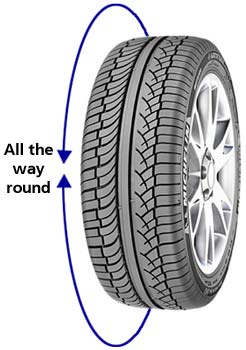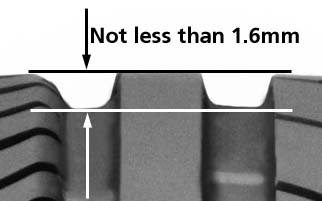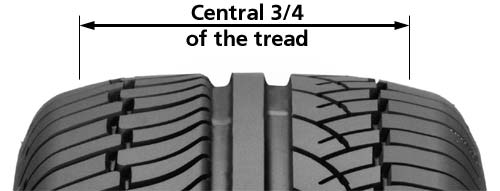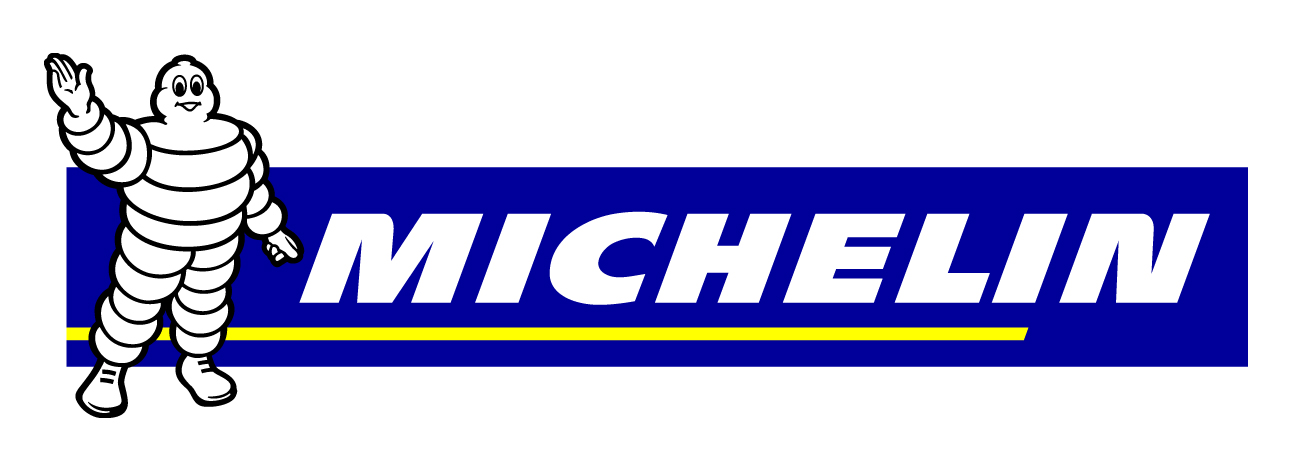UK Tyre Law
Tyres must be correctly inflated to the vehicle manufacturer’s specification for the load being carried.
Always refer to the manufacture’s handbook.
Tyres should also be free from certain cuts and other defects.

Tyre inflation pressure
Correct tyre inflation pressure is essential for safety, optimum tyre life, fuel efficiency, and will reduce CO2 emissions too.
Check tyre pressures (including the spare tyre) using an accurate gauge at least monthly, and before any long trip. Correct the tyre pressures if they do not correspond to the vehicle manufacturerís recommended levels for the conditions of use.
Ideally check pressures when the tyres are ìcoldî; this means that they have not been used in the last 2 hours, or have covered less than 2 miles at low speeds. Any tyre not in this ìcoldî condition is considered ìhotî. If the tyres are ìhotî use a pressure 4 to 5 psi (0.3 bar) higher than those recommended by the vehicle manufacturer. Do not deflate a ìhotî tyre, even if the pressure is above the recommended level.
Tyres gradually lose air inflation pressure naturally; hence the need to check and adjust them regularly. This regular check can also make you aware of any abnormal loss of pressure caused by things such as,
-a perforation by a screw or nail
-a faulty valve
-a poor seal between the tyre and the wheel rim
Tyres should always be used with the correct pressure, as under inflation may cause irreversible damage to the tyreís internal components and could eventually lead to a rapid deflation.
Inflation with nitrogen does not dispense with the need to frequently check tyre pressures.
If you are unsure about how to check your tyre pressures, ask your local tyre specialist for assistance.
Why should your tyres have the correct inflation pressure?
Because you will...
-Optimise road safety
-Maximise tyre life
-Minimise tyre related fuel consumption
-Reduce greenhouse gas emissions
-Improve your driving experience
-Save money!
Did you know that if your tyres are under inflated by 10 psi, as well as being a safety risk, thatís the equivalent of paying an extra 3p per litre for fuel because your engine has to work that much harder to overcome the extra rolling resistance from its tyres.
Cars, light vans and light trailers must have a tread depth of at least 1.6 mm across the central three-quarters of the breadth of the tread and around the entire circumference.
Motorcycles, large vehicles and passenger-carrying vehicles must have a tread depth of at least 1 mm across three-quarters of the breadth of the tread and in a continuous band around the entire circumference.



Mopeds should have visible tread.
Be aware that some vehicle defects can attract penalty points and can carry a fine per offending item.
Check your tyre pressures weekly. Do this before your journey, when tyres are cold as warm or hot tyres may give a misleading reading.
Your brakes and steering will be adversely affected by under-inflated or over-inflated tyres. Excessive or uneven tyre wear may be caused by faults in the braking or suspension systems, or wheels which are out of alignment. Have these faults corrected as soon as possible.
Tyre care information and Images ©2007 Michelin Tyre PLC


 This website uses cookies to improve your experience. We'll assume you're ok with this, but you can opt-out if you wish.
This website uses cookies to improve your experience. We'll assume you're ok with this, but you can opt-out if you wish.